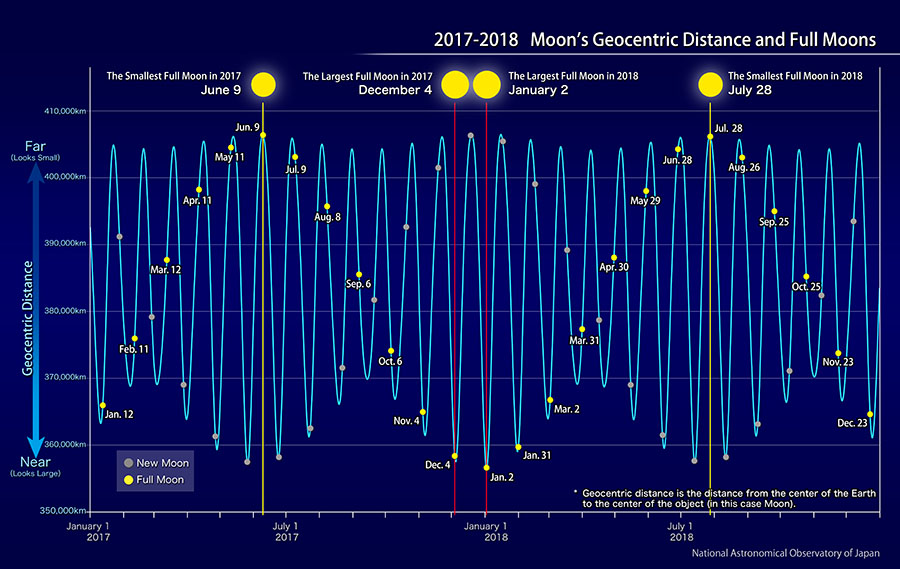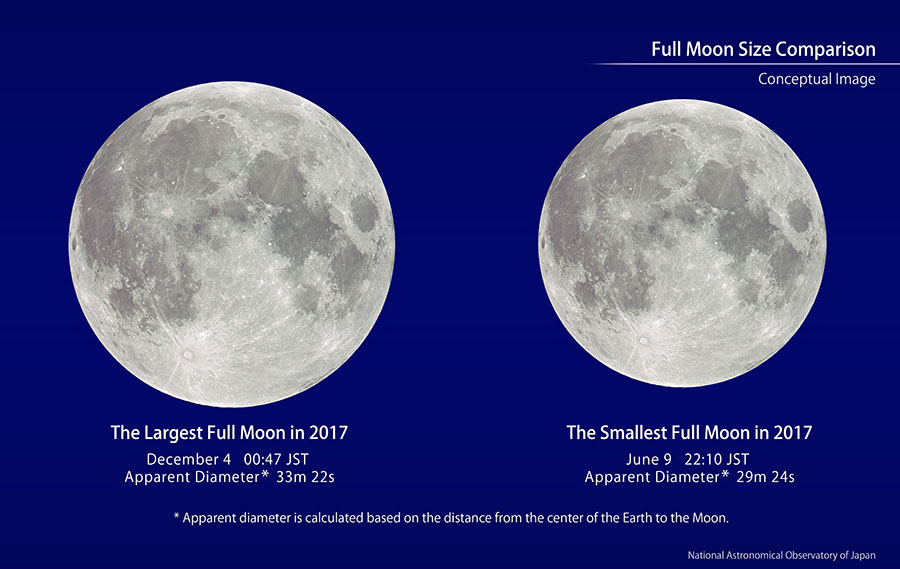This Year’s Smallest Full Moon (June, 2017)

Apparent Size of the Moon Changes!
The Moon moves around the Earth.
Since the Moon's orbit is not a circle but an ellipse, the distance between the Earth and the Moon is not constant. Also, the orbit of the Moon changes slightly as it is affected by the gravity of the Sun and the Earth, so that the distance when the Moon is at its closest position to the Earth (perigee), and the distance when the Moon is at its farthest position from the Earth (apogee) are different each time as shown in the figure above. The geocentric distance (the distance from the center of the Earth to the center of the Moon) during the full moon varies from approximately 356,000 kilometers to 406,000 kilometers. The apparent size of the Moon (apparent diameter) is large when the Earth and Moon are close; and small when they are far from each other. The apparent diameter of the largest full moon is 14 percent larger than that of the smallest full moon. Also the largest full moon appears 30 percent brighter than the smallest full moon.
The full moon of June 9 is the smallest in 2017.
The Moon passes through the apogee at 7:21 on June 9 and will be at full phase at 22:10. The geocentric distance at the time of the full moon is about 406,000 kilometers, and the apparent diameter is about 29 minutes 24 arcseconds.
The full moon of December 4 is the largest in 2017.
The Moon becomes full phase at 0:47 on December 4, just after the date has changed, and passes through the perigee at 17:46. At the time of the full moon, the geocentric distance is about 358,000 kilometers, and the Moon’s apparent diameter is 33 minutes 22 arcseconds. In the next month, when the Moon reaches full phase on January 2, 2018, it approaches even closer to the Earth than on December 4 (the geocentric distance is 357,000 kilometers and the apparent diameter is 33 min 30 arcseconds at the time of the full moon.)

You cannot line up the real moons in the night sky to compare the sizes. But if you could line up the largest full moon and the smallest full moon in 2017 as in the figure above, you could easily see the size difference.
Recently, the full moon with a large apparent size has started to gain attention as a news topic. However, rather than paying attention to the distance figures, how about actually looking up at the night sky, gazing at the Moon, and turning your attention to the Universe?
Reference: Ephemeris Computation Office
You can look up the rising and setting times for the Sun and the Moon, and the phases of the Moon in the “Koyomi Station” of the NAOJ Ephemeris Computation Office. You can find the appearance of the Moon and planets as seen from a typical city under “Sky Viewer.”